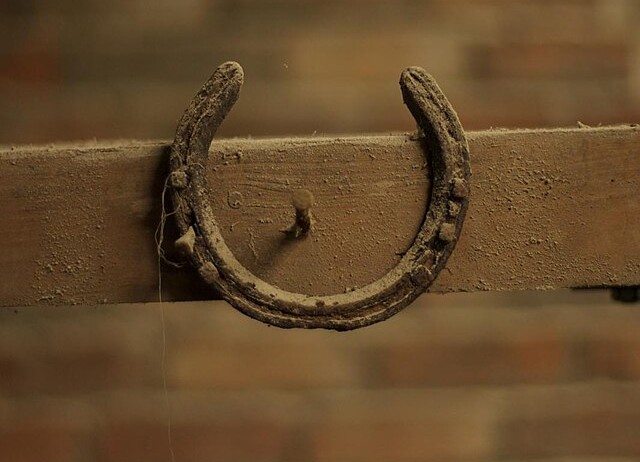
The horseshoe is a wonderful invention. It protects your horse’s feet by putting a half inch of steel between his delicate hoof and the hard ground. The problem with horseshoes is they only encircle the perimeter of the hoof, leaving the inner portion of exposed. So, if your horse steps on a sharp object, he could easily damage his foot. If left untreated, your horse could go lame. And unrideable.
To avoid this problem, you need to check your horse’s hooves after every ride and one of the things you want to check for is a bruised sole. Bruised soles are a common cause of lameness in horses and 9 times out of 10, a sharp stone is the culprit. Remember, your horse probably weighs around 1/2 a ton, so when he puts his full body weight on a sharp object he can’t see, the result isn’t pretty. If you find your horse has a bruised hoof, what do you do?
First, you need to assess how serious the bruise is. If your horse can support his own weight and yours too without flinching, it’s probably nothing to worry about. But if your horse is noticeably gimpy, even without you on his back, you need to do a little triage and figure out how bad the injury really is. If the bruise is in your horse’s heel, it may just be a corn (yes, horses get corns too). If this is the case, your farrier will try to cut the corn out. Depending on how painful the area is for your horse, the farrier might make a special horseshoe called a heart bar horseshoe. This special shoe is made to support the coffin bone by placing a metal tongue under the frog. And ff your horse is naturally thin-soled; he may even install a leather pad under the shoe. Heart bar horseshoes work very well. I’ve seen this kind of shoe relieve a horse’s corn pain very effectively. But if your horse doesn’t have any corns, yet he’s still displaying signs of being in pain, the problem may be a bit more serious.
Your farrier will probably want to remove the steel shoe and give your horse a more thorough examination. Expect the farrier to touch your horse’s hooves to see if they feel abnormally hot. If they are, it usually means your horse has an abscess, an infection of the hoof. If this is the case, either he or an equine veterinarian may treat the hoof abscess by paring it out and then poulticing it. Now, having said that, I’ve worked with some farriers who sometimes choose to let the abscess grow out to a point where he can just cut it off or filed off. I always take the farrier’s advice when it comes to abscesses, they’ve seen more hooves than I’ll ever see. Hoof injuries are not to be taken lightly. You’ll be able to tell if your horse was “off” during your ride. If so, spend a little extra time examining his hooves as you pick and clean them. If they’re bruised or feel hot, it’s time to call in your farrier for some professional advice.
Provided by CreaturesCorner.com reader Sierra Lynch.
Related Articles & Free Email Newsletter Sign Up
How & When to Halter Train a Foal
When Does a Horse Get Old and Retire?




Comment here